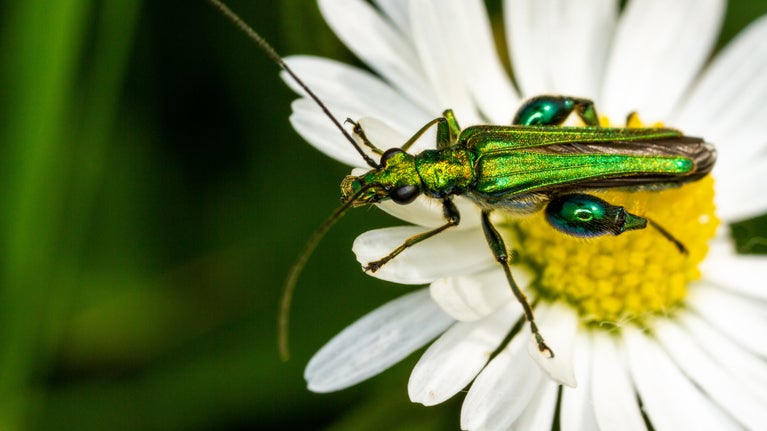
Get closer to wildlife
Discover tips for spotting mammals, birds and insects each season and learn about the range of wildlife at the places we look after.

Stepping out into nature and listening to birdsong can be a powerfully restorative experience. And with over 600 known bird species in the UK, their calls are a useful extra clue to use when bird spotting. Find out how you can use birdsong to identify the birds around you, next time you’re in your garden or on a walk.
A psychological study has found that natural sounds have restorative qualities. The calls of birds and other sounds of nature can help people recover much more quickly from stressful situations, compared with the noise of urban living.
Birdsong is also a great way to identify different species, along with visual cues. With a bit of practice, you’ll find they’re easy to learn. You may already recognise blackbird, blue tit, chiffchaff and robin calls without realising it.

The RSPB’s eGuide to British Birds app is a helpful tool for checking birdsong you hear when you’re out spotting. Here are some distinctive songs to get you started:
The chiffchaff sings its name, so it’s one of the easier songs to recognise.
Robins have a variable warbling, given in short phrases with longer gaps in between. The phrases can be quite piercing.
The skylark is a brownish bird with a beautiful song. Larks soar from the ground and float upwards on helicopter wings singing a burbling, watery song. Sometimes they go so high that you can barely see them, but the song carries nonetheless.

Immersing yourself in a chorus of birdsong at dawn or dusk is a wonderful way to get closer to nature. But how do you identify the different birds in the chorus? With practice, you can tune your ears to their distinctive calls.
Listen to this recording of the dawn chorus in spring and see if you can hear the distinct songs of the crow, blackbird, robin and song thrush.

Discover tips for spotting mammals, birds and insects each season and learn about the range of wildlife at the places we look after.
Find out how the changing seasons affect the birds you’ll see out and about, with spotting tips and photo galleries to guide you.

If you’d like to see more birds in your outdoor space, discover how you can make a simple bird feeder with just a few items and ingredients.

Encourage birds to visit your garden or outdoor space throughout winter and early spring by making these nourishing fat cakes. They're also a great way to make use of your food scraps and yoghurt pots.

Learn what you’ll need to do to give you the best chance of seeing a feathered friend, whether you’re watching birds on the window sill or walking through a forest. Take part in ‘50 things to do before you’re 11¾’ activities.

Barn owls are instantly recognisable from their heart-shaped faces and distinctive feathers. Learn where they prefer to hunt and nest, and the kinds of habitats they use at the places in our care.
